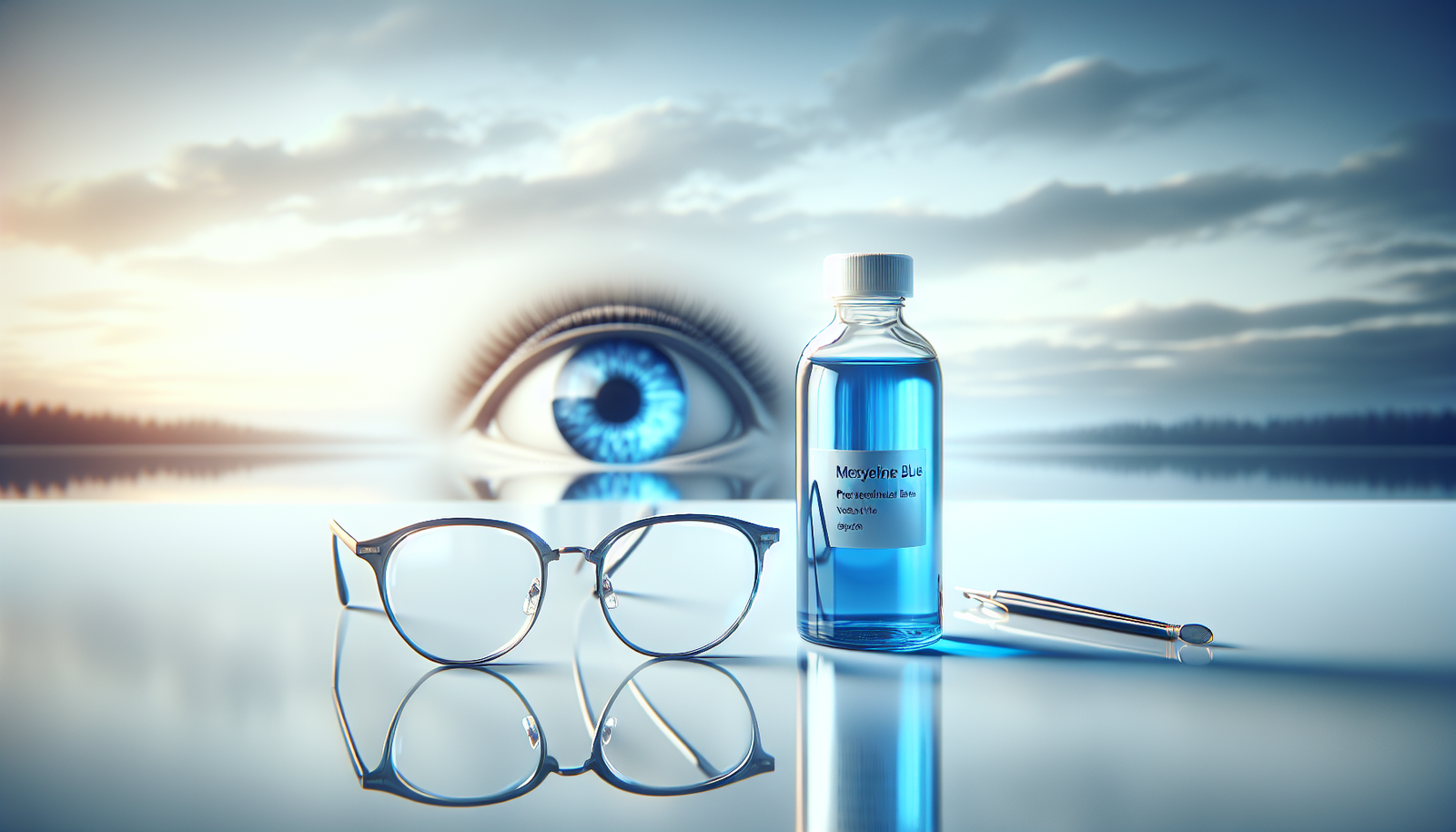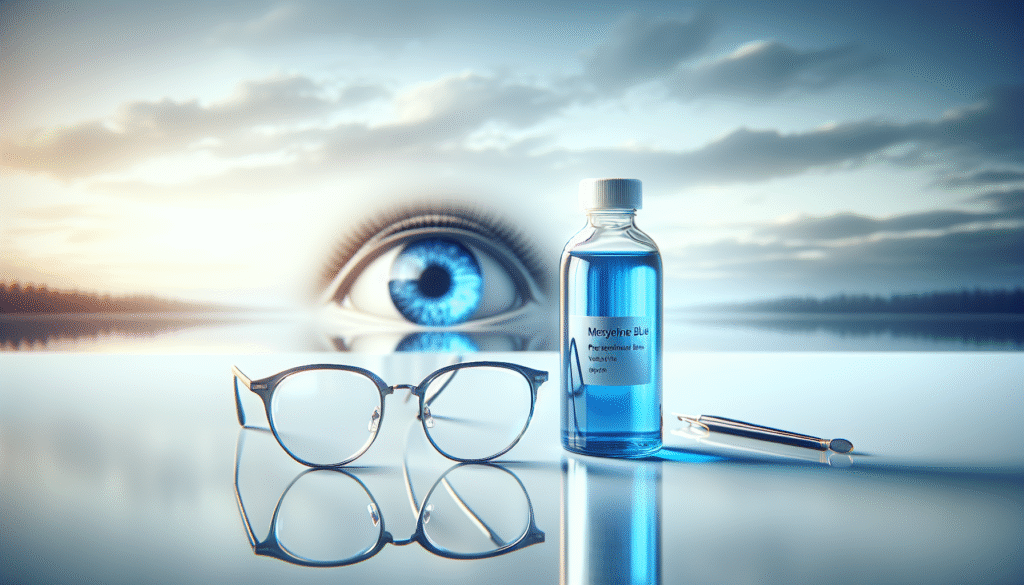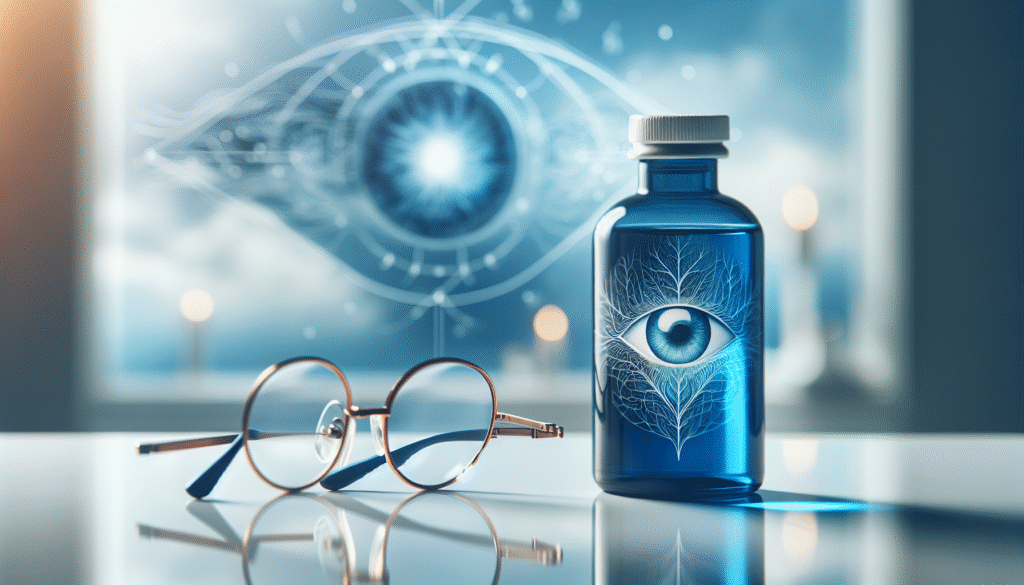
Have you ever wondered how a simple dye could hold the key to preserving your eyesight as you age? Methylene blue, a compound with a rich history in medicine and science, is garnering attention for its potential benefits, especially in relation to age-related vision loss. This article examines the intricate relationship between methylene blue and its protective effects on vision, alongside the underlying mechanisms through which it may operate.

Understanding Age-Related Vision Loss
Age-related vision loss encompasses a range of conditions that impair eyesight as one ages. The most common types include age-related macular degeneration (AMD), cataracts, and glaucoma. Each of these conditions has unique characteristics and implications for vision, but they all contribute to the overall decline in visual acuity that many experience later in life.
The Silent Progression of Vision Decline
You may not realize the gradual effect of age on your vision until you’re faced with significant challenges, such as difficulty distinguishing colors or noticing subtle details. For instance, AMD is characterized by damage to the retina, which can lead to blurred or diminished central vision. In contrast, cataracts result from clouding of the eye’s natural lens. Understanding these processes helps you appreciate why maintaining visual health is critical.
Factors Contributing to Age-Related Vision Loss
Various factors influence the likelihood and severity of vision loss, including genetics, lifestyle choices, and environmental exposures. For example, prolonged exposure to UV light and poor nutritional habits may exacerbate these conditions. Recognizing the multifaceted nature of vision loss can empower you to take proactive steps in preserving your eyesight.
The Role of Methylene Blue
Methylene blue has long been recognized for its application in medical treatments, primarily for conditions such as methemoglobinemia. Additionally, recent research indicates its potential for neurological and ocular benefits. You might be surprised to learn that this vibrant dye could be more than just a laboratory tool but may also hold promise as a therapeutic agent in preventing or slowing age-related vision loss.
Historical Context of Methylene Blue
Initially synthesized in the 19th century, methylene blue was first used as a dye in textiles. It wasn’t until later that its medicinal properties began to surface. Understanding its history gives you insight into why it has remained a subject of scientific curiosity and investigation over the years.
Mechanisms of Action
Research suggests that methylene blue may exert beneficial effects through several mechanisms:
-
Antioxidant Activity: Methylene blue has shown potential as a strong antioxidant, protecting cells from oxidative stress, which is detrimental to cell health and function.
-
Mitochondrial Support: This compound is known to enhance mitochondrial function, playing a crucial role in energy production and cellular repair. Improved mitochondrial health may lead to better overall cell function within the retina.
-
Neuroprotective Effects: By mitigating neurodegenerative processes, methylene blue could protect retinal neurons from degeneration, which is crucial in preserving vision.
Scientific Evidence Supporting Methylene Blue’s Efficacy
While the theoretical underpinnings are promising, you may wonder what scientific studies say regarding methylene blue’s effectiveness in preventing age-related vision loss.
Current Research Landscape
-
Several animal studies have indicated that methylene blue administration can lead to improved visual function, even in settings of induced retinal damage.
-
In vitro studies reveal that methylene blue protects retinal pigment epithelium (RPE) cells from oxidative damage, a significant contributor to AMD.
-
Clinical trials observing the effects of methylene blue have yet to be fully realized, but preliminary findings suggest a trend towards efficacy in improving retinal health.
Limitations of Current Research
Though the existing evidence is intriguing, it’s essential to recognize the limitations present in current studies. For one, much of the research is conducted in animal models rather than humans. Additionally, the dosages and methods of administration vary, making it difficult to form a definitive conclusion on appropriate use in humans.
Practical Application: How to Use Methylene Blue
If you are considering methylene blue as a potential ally against vision loss, understanding its mode of application is crucial.
Dosage and Administration
The appropriate dosage of methylene blue for ocular health is still under investigation, and consulting a healthcare professional is vital before starting any new treatment. Current research suggests lower dosages that may mitigate potential toxicity while enhancing therapeutic effects.
Possible Side Effects
While considered relatively safe, methylene blue can produce side effects such as gastrointestinal upset, headache, and, in some cases, allergic reactions. Familiarizing yourself with these risks is crucial before use.
Recommended Forms and Availability
Methylene blue is available in various forms, including oral supplements and injectable options. It is essential to source products from reputable suppliers to ensure quality and efficacy.

Lifestyle Factors that Complement Methylene Blue
While methylene blue presents a curious option for vision preservation, it should not replace a comprehensive approach to ocular health.
Nutritional Support
Incorporating antioxidants into your diet can enhance the protective effects of methylene blue. Nutrients such as vitamins C and E, beta-carotene, and zinc have demonstrated benefits in maintaining eye health. Consuming a balanced diet rich in fruits, vegetables, and whole grains is ultimately your best defense.
Sun Protection
Protecting your eyes from UV light is another critical component. Wearing sunglasses that block UVA and UVB rays can significantly reduce your risk of cataracts and other UV-related ocular diseases.
Regular Eye Exams
Routine eye examinations allow for early detection and management of potential issues. Discussing your interest in methylene blue with your ophthalmologist ensures that you’re making informed choices regarding your treatment and preventive measures.
Habits for Healthy Vision
Developing healthy habits, including quitting smoking and minimizing screen time, can also contribute to better long-term eye health. Engaging in regular physical activity may enhance blood circulation, benefiting overall eye health as well.
Future Directions in Research
As the scientific community continues to investigate methylene blue’s potential role in preventing age-related vision loss, several areas warrant further exploration.
Clinical Trials and Human Studies
Moving forward, there is a significant need for well-designed clinical trials to elucidate methylene blue’s optimal dosages, administration methods, safety, and efficacy in human populations. Engaging in such trials could pave the way for more conclusive evidence and potentially revolutionize treatment strategies.
Understanding Long-Term Impacts
Research must also focus on the long-term effects of methylene blue use on eye health. Understanding how sustained use may influence visual function and overall ocular health is pivotal for its acceptance and application in clinical settings.
Broader Implications for Eye Health
Exploring the connections between methylene blue, cognitive function, and systemic health could yield valuable insights. If methylene blue demonstrates protective properties beyond ocular health, it could be a key player in holistic aging strategies.
Conclusion: A Cautious Optimism
The potential for methylene blue to help prevent age-related vision loss is undoubtedly intriguing. Its historical context and emerging research suggest a promising avenue for preservation of eyesight. However, the complexities of vision loss require you to approach this compound with caution, alongside maintaining other healthy practices essential for ocular wellness.
While these findings are significant, further empirical evidence is needed before any definitive claims about methylene blue’s effectiveness in human populations can be made. You are encouraged to remain informed, consult healthcare professionals, and consider all aspects of eye health as you age.
As research unfolds, methylene blue might not only light the path toward preserving vision but could also illuminate our understanding of age-related decline in more profound ways. Until then, keep an eye on the developments in this field—your vision’s future may depend on it.